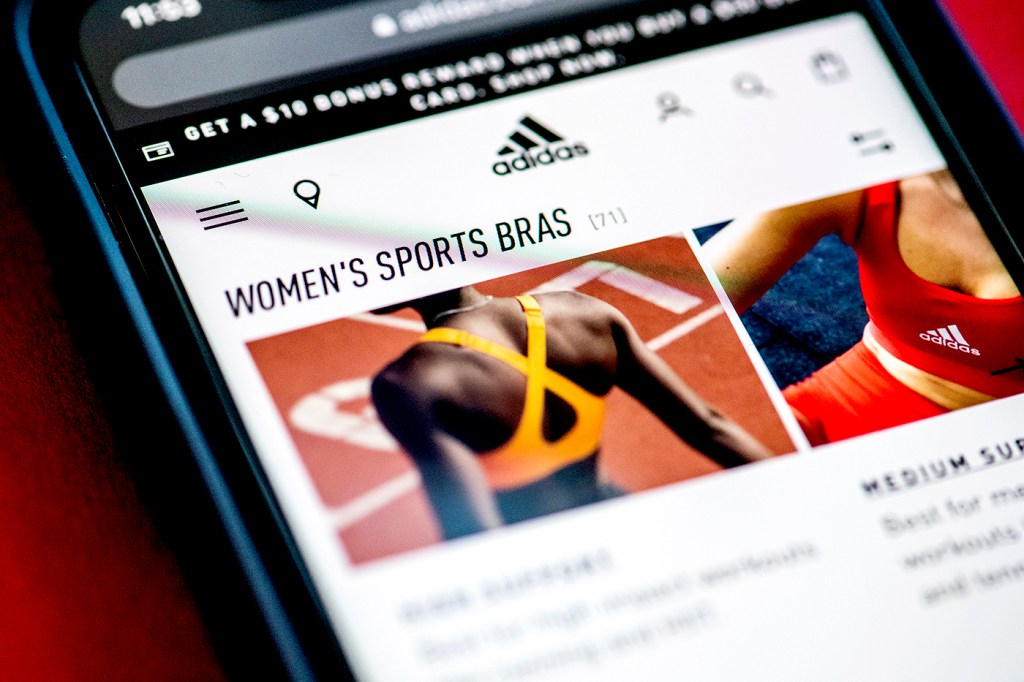Adidas bared it all in a new ad campaign. Who does it support?

An Adidas post featuring a photo grid of topless women made a splash online recently, prompting a mix of applause and criticism from people who viewed the ad either as a win for body-positivity or an overly sexualized sales tactic. It may not be so black-and-white, though.
The ad, part of a marketing campaign to announce the company’s new line of sports bras, earns points for its unabashed representation of (seemingly) unretouched images of women’s bodies—but nonetheless uses those bodies to sell merchandise, says Rachel Rodgers, associate professor of applied psychology at Northeastern.

Rachel Rodgers is an associate professor of applied psychology in the Bouvé College of Health Sciences at Northeastern. Photo by Adam Glanzman/Northeastern University
“There is still a tension there,” says Rodgers, who studies social and cultural influences on body image and eating concerns.
“I think a movement toward a more realistic representation of bodies can only be a good thing, and there’s a lot to like about these visuals in those terms,” she says. “But it’s counterbalanced with the amount of visibility that female bodies get generally, in an attempt to sell products.”
From an advertising perspective, the campaign has a lot of upsides, says Daniele Mathras, associate teaching professor of marketing at Northeastern.
“I’m always interested in taglines: Is it memorable? Does it cut through the clutter?” says Mathras, who also coordinates the brand-management concentration in the D’Amore-McKim School of Business. “The Adidas tagline for this campaign, ‘Support is everything,’ is a great one. It evokes both the physical support offered by their sports bras, but also emotional support. It’s something they can continue to use moving forward.”

Daniele Mathras is an associate teaching professor of marketing and coordinator of the brand management concentration in the D’Amore-McKim School of Business. Photo by Alyssa Stone/Northeastern University
The company’s topless gallery first appeared on its official (@adidas) Twitter account as well as its Adidas women’s (@adidaswomen) Instagram account, and it’s an example of classic persuasion tactics used by marketers for years, Mathras says. The arresting images disrupt users’ mindless scroll through the social-media sites, and that disruption primes them to be curious about new information, she says. Needing to know more about what’s behind the image, people are likely to click on the link to Adidas’ site.
“This tactic isn’t used very often because it can be polarizing and it’s easy to go overboard with shocking images or text,” Mathras says. “But it can also be very effective when used sparingly.”
The key is the follow-up, she says. In another Tweet and several Instagram posts that followed the initial posting, Adidas shared a short video that featured a diverse cast of women exercising in its myriad varieties of sports bras. On its website, Adidas added a longer (though still short at two-and-a-half minutes) video with instructions about how to choose a sports bra that fits properly.
Still, this type of ad is bound to offend some people. One Twitter user commented that the ad was “disrespectful” and “tacky,” and others balked at the image on a website that young people could easily stumble upon.
To the extent that it got people talking about body acceptance at all, though, Mathras says the ad was a success.
“One company is not going to change the narrative on desexualizing breasts and normalizing the human body,” she says, “but it will get people talking about it, and that’s a step in the right direction.”
For media inquiries, please contact Marirose Sartoretto at m.sartoretto@northeastern.edu or 617-373-5718.





